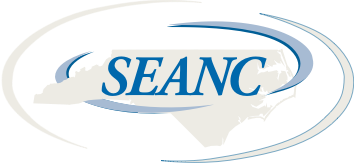NC wants you to be a Hazard Hero
Jan 09, 2015
 Do you look around your workplace every day and see the potential for accidents? Do you go out of your way to make sure you and your co-workers stay safe? Then speak up and be a Hazard Hero!
Do you look around your workplace every day and see the potential for accidents? Do you go out of your way to make sure you and your co-workers stay safe? Then speak up and be a Hazard Hero!
During his 2014 State of the State address, Gov. Pat McCrory announced one of his top priorities would be reducing the state’s high number of workplace injuries, which in January 2013 averaged 12,000 a year, and the high cost of worker’s compensation claims, which had reached $140 million a year.
Now, says John Bogner, director of the state Office of Human Resources Division of Safety, Health & Workers’ Compensation, they want to get employees in every state agency, every cabinet department and every university, community college and school system even more involved in the effort.
In June 2014, Bogner and the division launched a new program called Hazard Heroes. The goal, Bogner explained, is to “engage and empower employees to identify hazards and fix them on their own, and if they can’t, report them to their supervisor.”
The challenge, he said, is raising awareness in state government about the role of each employee in workplace safety. State government, he said, has always done a great job of serving the public and carrying out that primary mission. Now it's putting that same emphasis on the welfare of state employees.
“We want to emphasize that mission in the workplace too. If an injury does occur, we certainly want to make sure employees get the best care possible. Their welfare is our concern. But, there is also a business side to workplace safety,” Bogner said. “State employees are an extremely valuable asset and are essential in providing services to the citizens of North Carolina. If they are out of work due to an injury, we don’t have access to that valuable asset. So, it is important that we facilitate getting them back to work as soon as possible.”
To that end, the Hazard Heroes program was created with the guiding principle that “employees can eliminate or minimize hazards” because they are the people best positioned to identify and help correct them.
So what is a hazard? Anything that creates an unsafe workplace, whether it’s a frayed rug, a frayed electrical cord, a damaged sidewalk, a tree obstructing a person’s view, or even common behaviors such as standing on a chair to reach a high shelf or leaning off the side of a ladder to change a lightbulb. State officials also want employees’ safety awareness to extend outside the workplace because preventing injuries away from work also is important.
The program, Bogner explained, seeks to move beyond simply lecturing about the importance of safety to equip employees to proactively look for and fix the hazards that can lead to accident and injuries. To do that, the Hazard Heroes program strongly encourages management and employees to participate in online and in-person training modules, keep safety at the forefront of employees’ minds through daily reminders, and to give employees an easy tool – in this case, a printable online form – to report when hazards are identified.
Through its first six months, the program’s training modules have focused on identifying and preventing the most common type of workplace accidents leading to workers’ comp – slips, trips and falls. Coming soon will be modules focused on improving employees’ ergonomics. The program also focuses on other simple reminders such as wearing the proper personal protection equipment and not taking unnecessary risks.
“We want people to look around, not take shortcuts, watch their step, be aware of their surroundings, use their senses and ask themselves, ‘What could go wrong,’” Bogner said.
Since June, the program has resulted in about 40 official forms turned in, though Bogner says they believe many other hazards are being addressed more immediately by the employees and their supervisors. And while they are encouraged by that level of employee ownership, they are hoping that as awareness of the program grows that more forms will be turned in so they can track where hazards and potential hazards exist – even if they have already been corrected.
“We are responding to the employees. We are responding to the supervisors. The follow-up component is so important,” Bogner said. “We need to develop a safety culture and we can do that by demonstrating the value of our workplace safety and hazard recognition training by reducing injuries and related workers’ compensation costs.”
To learn more about the Hazard Heroes program or to report a hazard, visit http://www.oshr.nc.gov/Support/Safety/hazard.htm.
